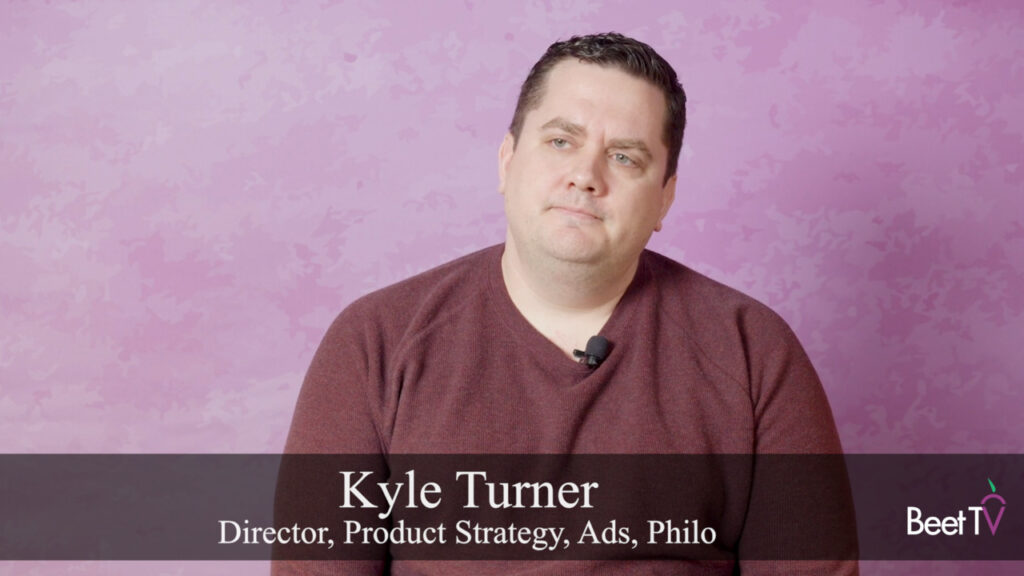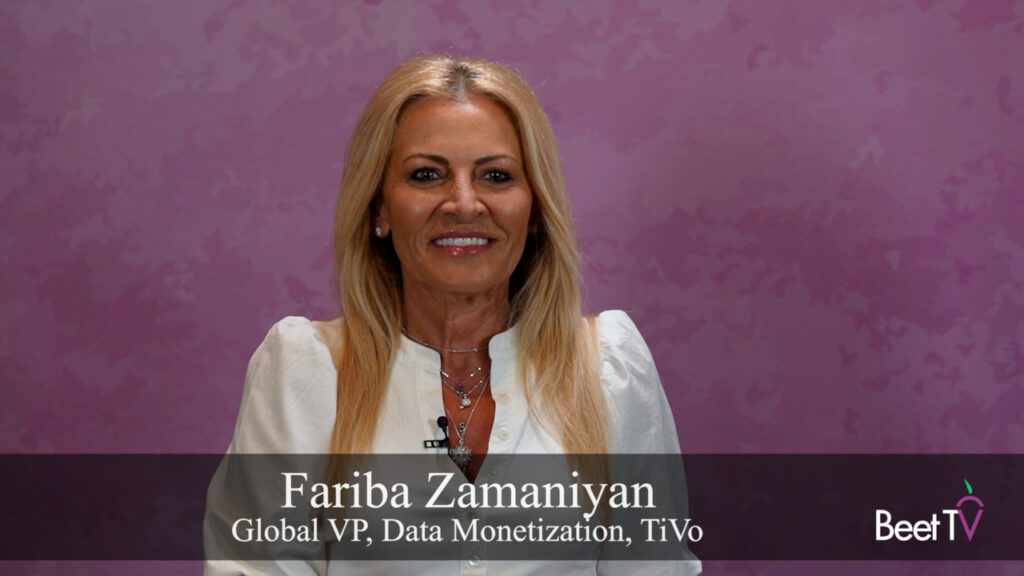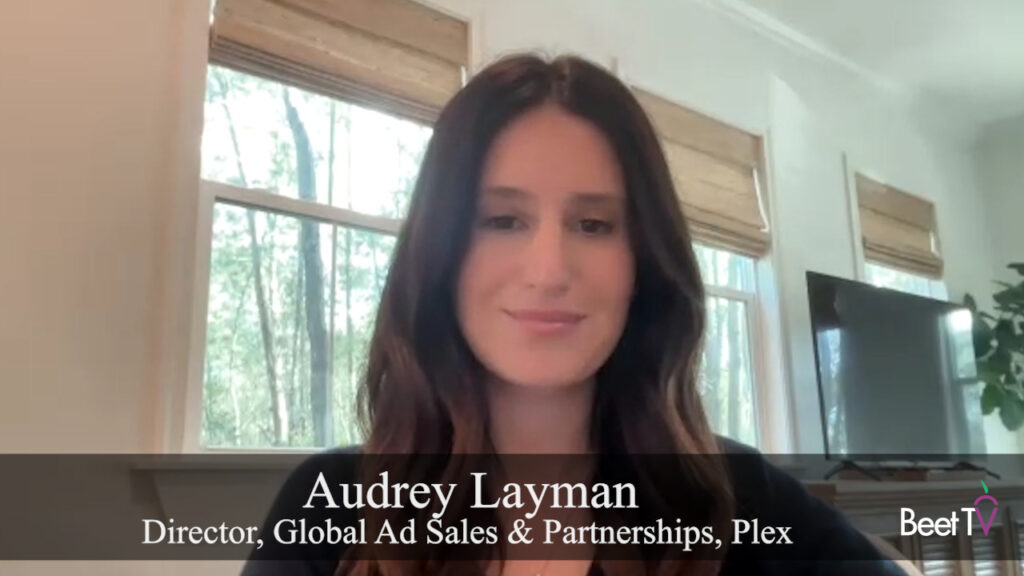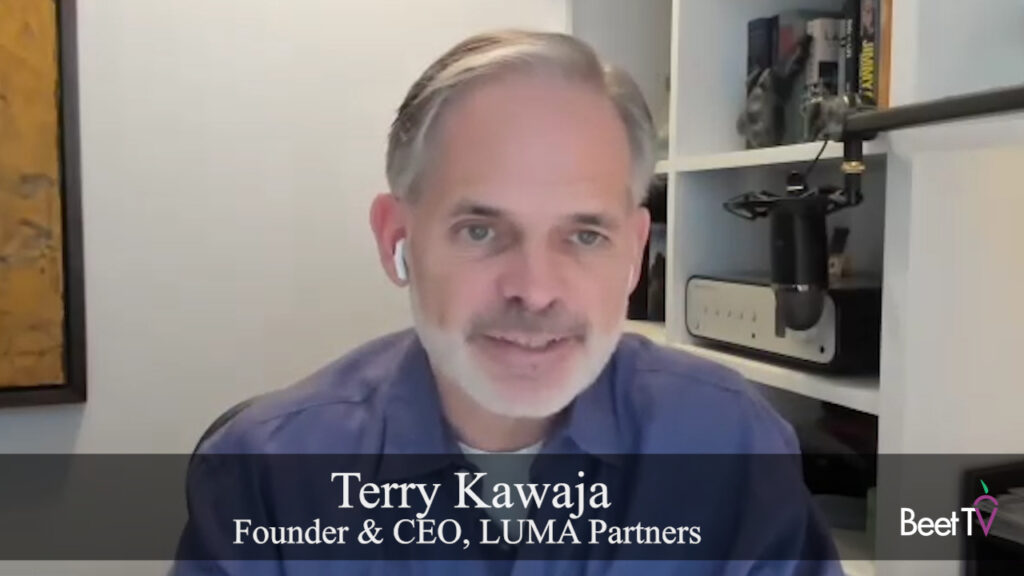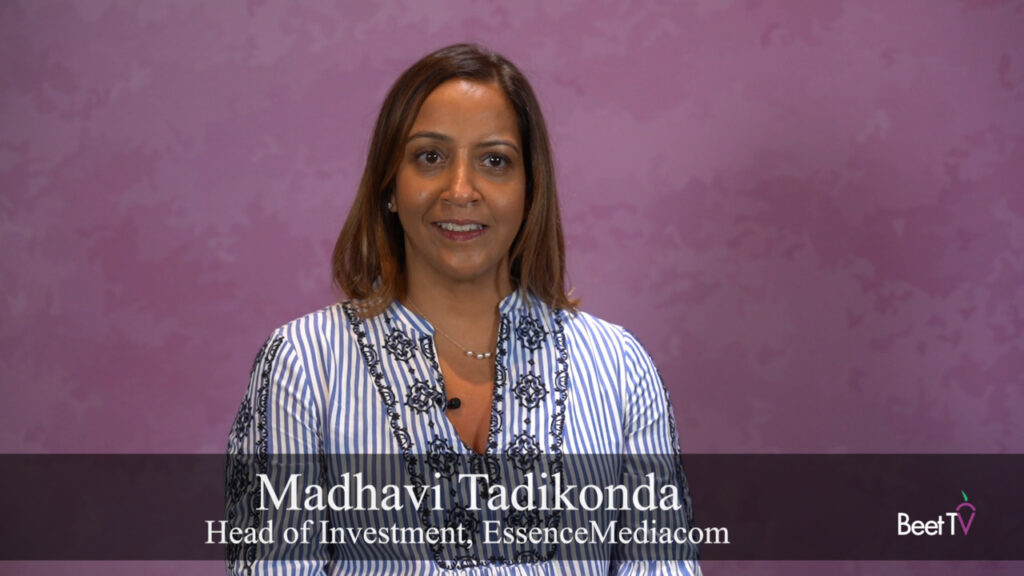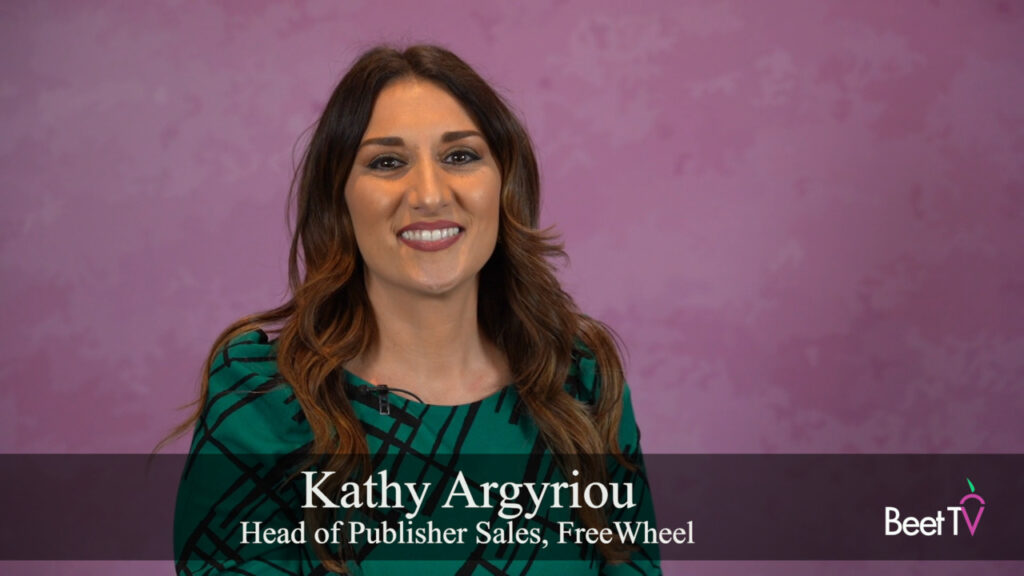Even as video content providers endeavor to keep up with viewing choices, commercials need to catch up with viewing technology. To do so, they need to get smarter, says BrightLine’s Rob Aksman.
“The impetus is on us now to make sure advertising does not fall behind and keeps pace with all the personalization and seamlessness of the viewing experience,” says Aksman, who is Founder & Chief Strategy Officer of the company best known for dynamic ad solutions.
In this interview with Beet.TV, Aksman discusses the options available to brands for “making commercials smarter” and explains the significance of BrightLine’s new partnership with Cuebiq to attribute commercial exposure and engagement to footfall at stores and restaurants.
In its simplest form, personalization can transform a traditional, static commercial for Benjamin Moore paint that’s delivered to a mass audience. “Now there’s a dynamic overlay on top of that commercial that everybody’s seeing but it’s tailored to me, showing me the location and address and phone number of my local Benjamin Moore store,” says Aksman. “All we’ve done there is just make a TV commercial a little bit smarter so that a viewer can take that next step.”
Further personalization based on viewing location can turn weather into an asset for, say, apparel companies to make product recommendations in an ad overlay relevant to viewer-based conditions or forecasts. Aksman cites the continued growth of third-party consumer data regarding brand preferences, purchases, familial makeup, income and more.
“We’ve built a pretty hefty connected-TV household graph at the home level so we’ve mapped all those segments to the home,” he says.
Within the past week, BrightLine announced a linkup between location intelligence firm Cuebiq and BrightLine’s OTT video ad platform. The companies say that an initial analysis of BrightLine advertisers using Cuebiq’s platform showed an increase in footfall traffic by as much as 24% when exposed to the ads, and by 56% when looking at customers that engaged with the ads in question, as MediaPost reports.
“We’re able to use their footfall attribution technology to measure the impact of an enhanced TV ad,” says Aksman. “When a viewer is exposed to a personalized ad or if they engage with a commercial, our partnership with Cubic allows us to report on what was the actual lift in foot traffic to that retailer that QSR or that restaurant by being exposed and or interacting with that commercial. And I think that is the tip of the iceberg in bringing the power of digital attribution to television.”
Asked about the tradeoff between creative versioning and the expense of producing multiple creative iterations, Aksman says it’s “not all that scalable today until there are better methods of creating versioned video.” There’s more emphasis being placed on versioning the overlays. “That’s pretty simple and turnkey. That’s how you keep it scalable and also efficient.”
BrightLine uses interactive ads to gain attention metrics on viewers “or start moving them down the funnel.” Examples include automotive brands using car colorizers or rotators and Cinnamon Toast Crunch enabling viewers to make one square eat another square.
“In the age of distraction, the agency now knows this percent of people not only saw but actually deliberately spent some time and engaged with the commercial,” says Aksman.
On the sell-side, BrightLine is at the forefront of efforts to increase the value of ads even as ad load reduction means less inventory with which to monetize content. “We see ourselves as the tech enabler for them to bring a tool kit of advanced ad experiences to market. We’re not just the tech provider for that but we’re also providing marketing support and ideation behind the scenes.”
This segment is from a Beet.TV series “It’s an OTT World” presented by BrightLine. Please visit this page for additional videos.














